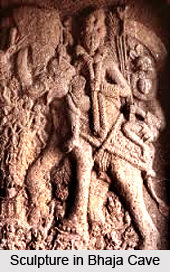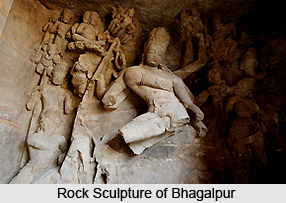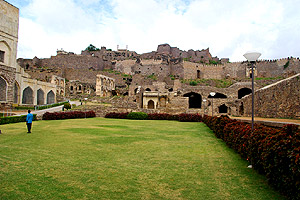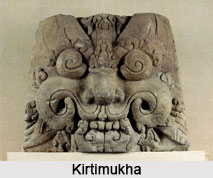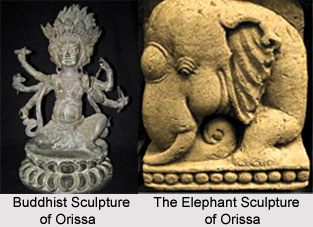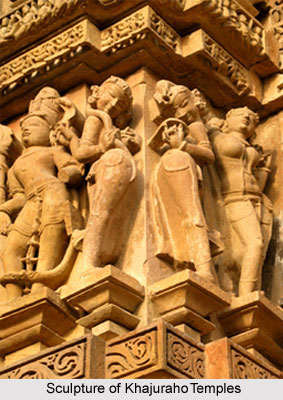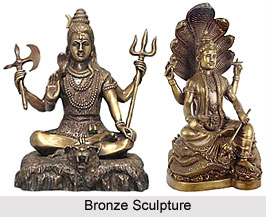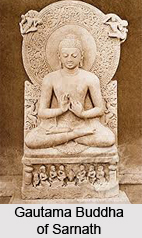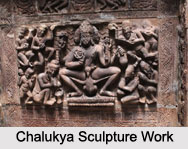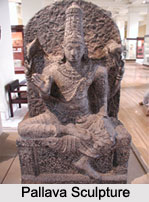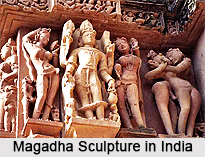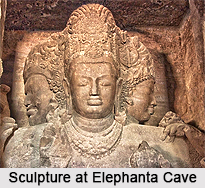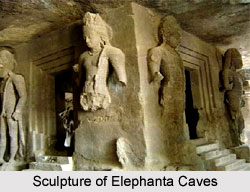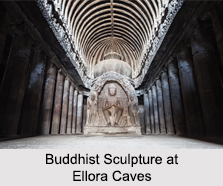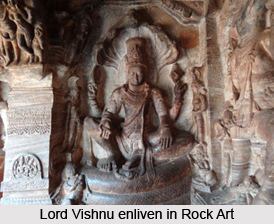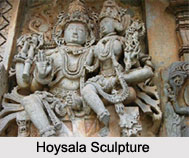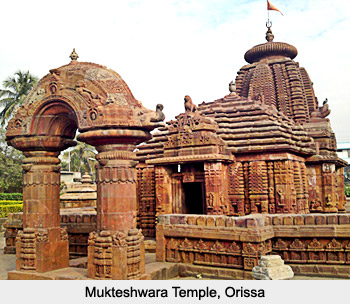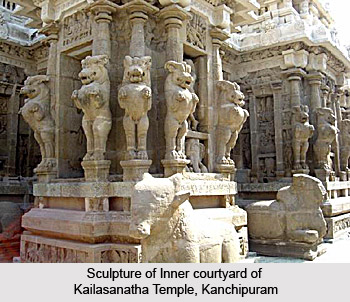 The sculpture of Kailasanatha Temple, also known as Kailash Temple, is one of the finest examples of Indian rock cut architecture of the Pallava era. It is located in Kanchipuram. This structure dates back to the 8th century. It is a fine example of `sandharaprasada` which means containing two walls providing an ambulatory. The temple has been sculpted in such a way that it is reminiscent of Mount Kailash. Hence it has been named `Kailasanatha.` It is situated in the Ellora caves complex. Although it has been carved out of a single rock it displays the features of Dravidian art and architecture.
The sculpture of Kailasanatha Temple, also known as Kailash Temple, is one of the finest examples of Indian rock cut architecture of the Pallava era. It is located in Kanchipuram. This structure dates back to the 8th century. It is a fine example of `sandharaprasada` which means containing two walls providing an ambulatory. The temple has been sculpted in such a way that it is reminiscent of Mount Kailash. Hence it has been named `Kailasanatha.` It is situated in the Ellora caves complex. Although it has been carved out of a single rock it displays the features of Dravidian art and architecture.
The architecture and sculpture of Kailasanatha Temple is noteworthy for its vertical excavation. It has been observed that the carvers started carving at the top of the original rock and excavated downward. The architects who built this temple belonged to the southern Pallava dynasty. According to historical facts it has been estimated that about 200,000 tons of rocks was dug for around hundreds of years to construct Kailasanatha Temple. This monolithic structure has chisel marks on its walls. From these it has been derived that at three types of chisels were used to carve Kailasanatha or Kailash Temple.
The gateway that leads to the temple is two storeyed and the courtyard immediately in front of it is U-shaped. The border of the courtyard has been decorated with a columned arcade that rises to the height of three stories. These arcades are, in turn, adorned by sculpted alcoves and panels. The alcoves house different deities that have been reflect the sculpture of that age. The carvings on the Kailasanatha Temple have been done in several levels.
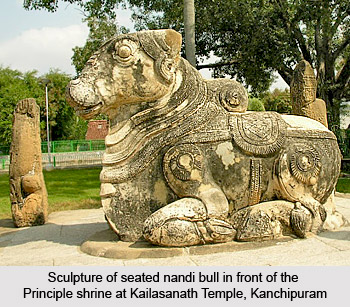 The courtyard of temple has not been left empty. There are two structures in the courtyard. In front of the principle shrine a seated image of Nandi bull has been sculpted. This shrine has been further decorated with intricate and detailed carvings. While taking a look at the base of the temple structure it would appear as if elephants are holding the structure in its place. Inside the temple the pillars have been decorated widely with lions and at times with elephants, nagas and bhulas.
The courtyard of temple has not been left empty. There are two structures in the courtyard. In front of the principle shrine a seated image of Nandi bull has been sculpted. This shrine has been further decorated with intricate and detailed carvings. While taking a look at the base of the temple structure it would appear as if elephants are holding the structure in its place. Inside the temple the pillars have been decorated widely with lions and at times with elephants, nagas and bhulas.
A living rock bridge has been built to connect the Nandi Mandap to the portico of the Shiva temple. The temple is in the shape of a pyramid that would instantly remind one of the South Indian temples. Other features that are present within the temple are inner and outer rooms, pillars, windows, gathering halls and the presiding Shiva linga. Carved out from a single rock the shrine has been decorated with deities as well as erotic sculptures. Most of these sculpted figures are found on the left side of the entrance. Amazingly the right side of the entrance has been adorned with the sculptures of the Vaishnavaite deities.
Besides these there are two `dhwajastambhas` in the courtyard. The grand sculpture of Ravana endeavoring to lift Mount Kailasha, the abode of Lord Shiva, with all his might is simply outstanding.
The gopurams are missing in this four-storeyed temple. Each storey is decorated with kutas, kostas and panjaras. Moreover the sculpted deities are inspired from those belonging to the Chalukyan era. Another important sculptural feature of Kailasanatha Temple at Kanchipuram is ornate designs on the outer walls.
